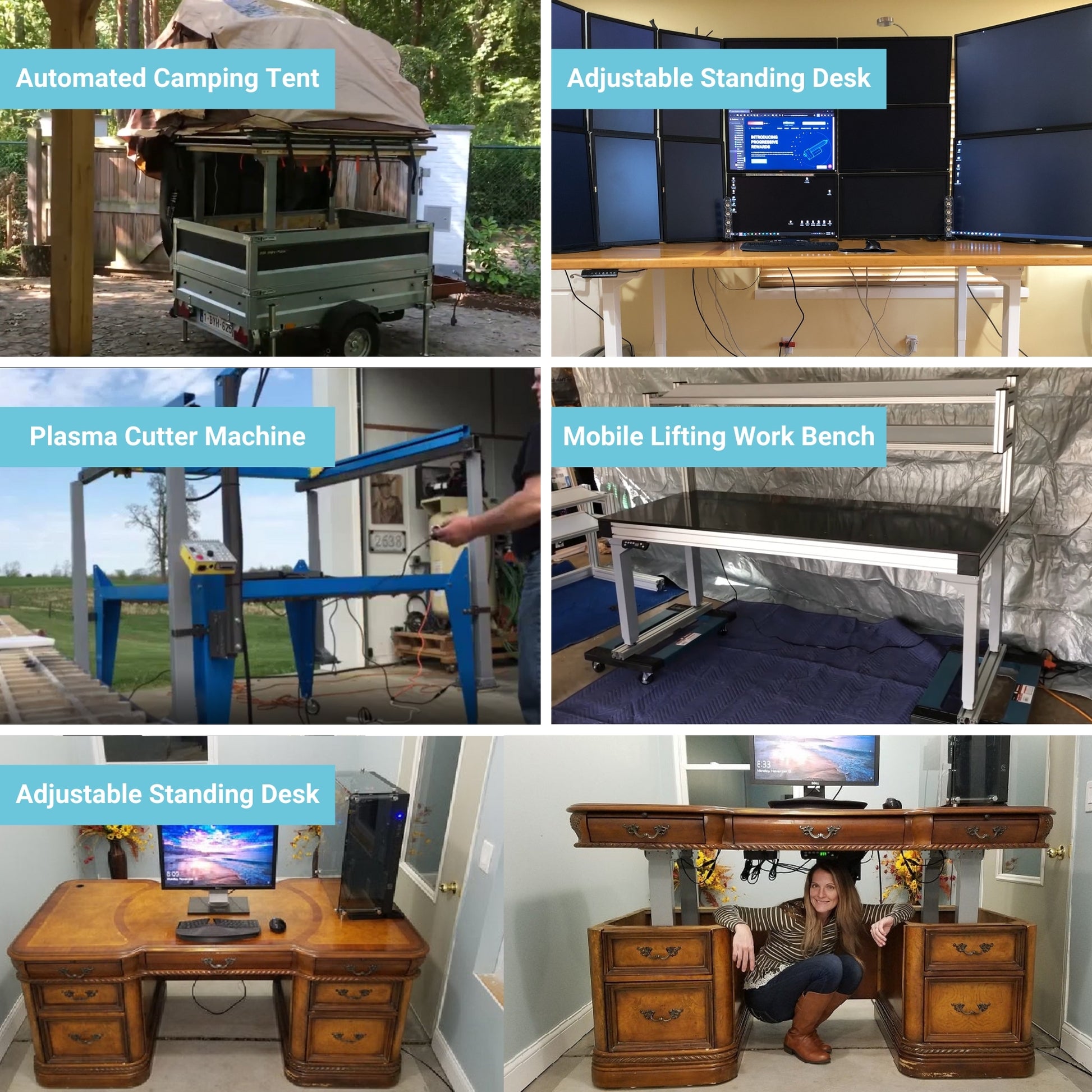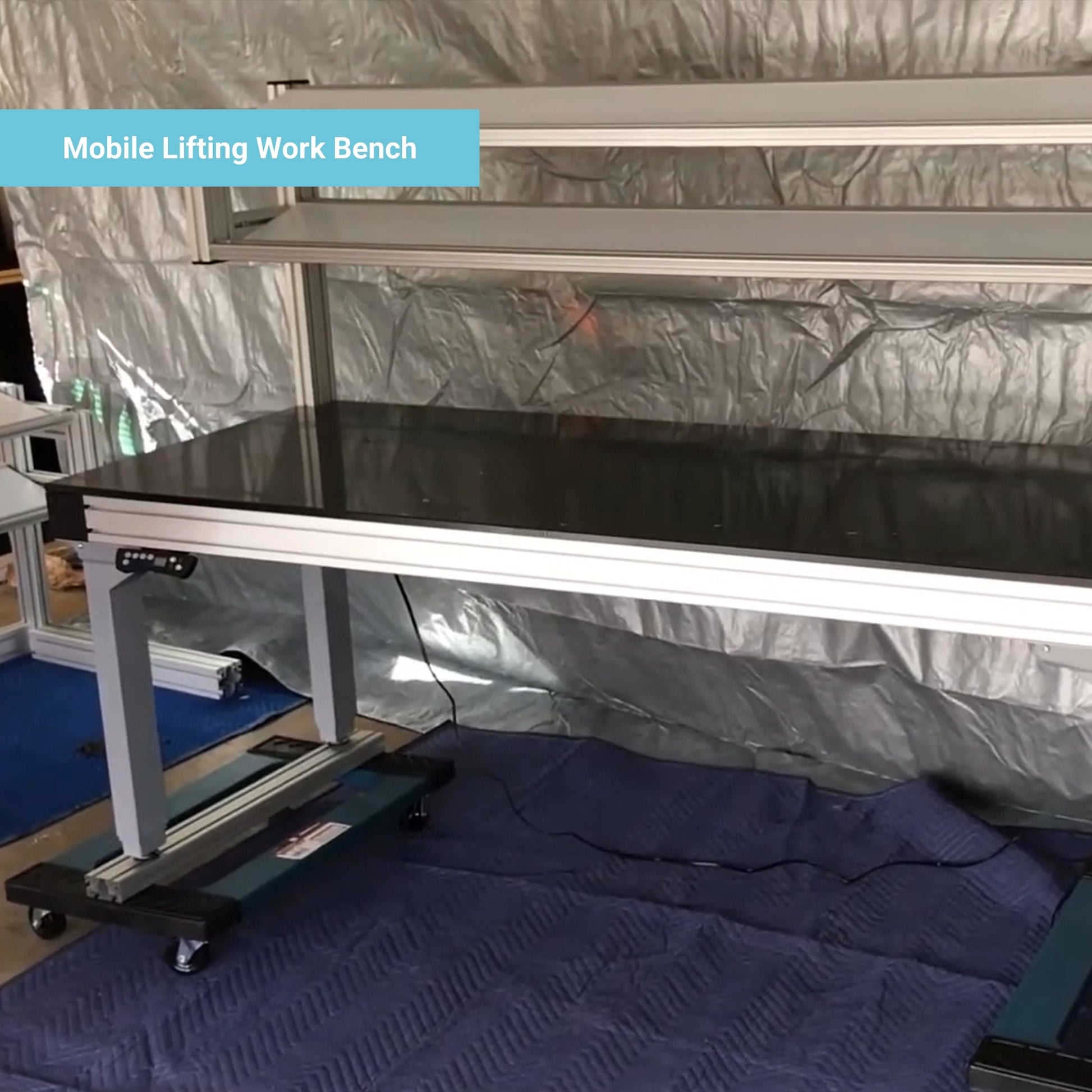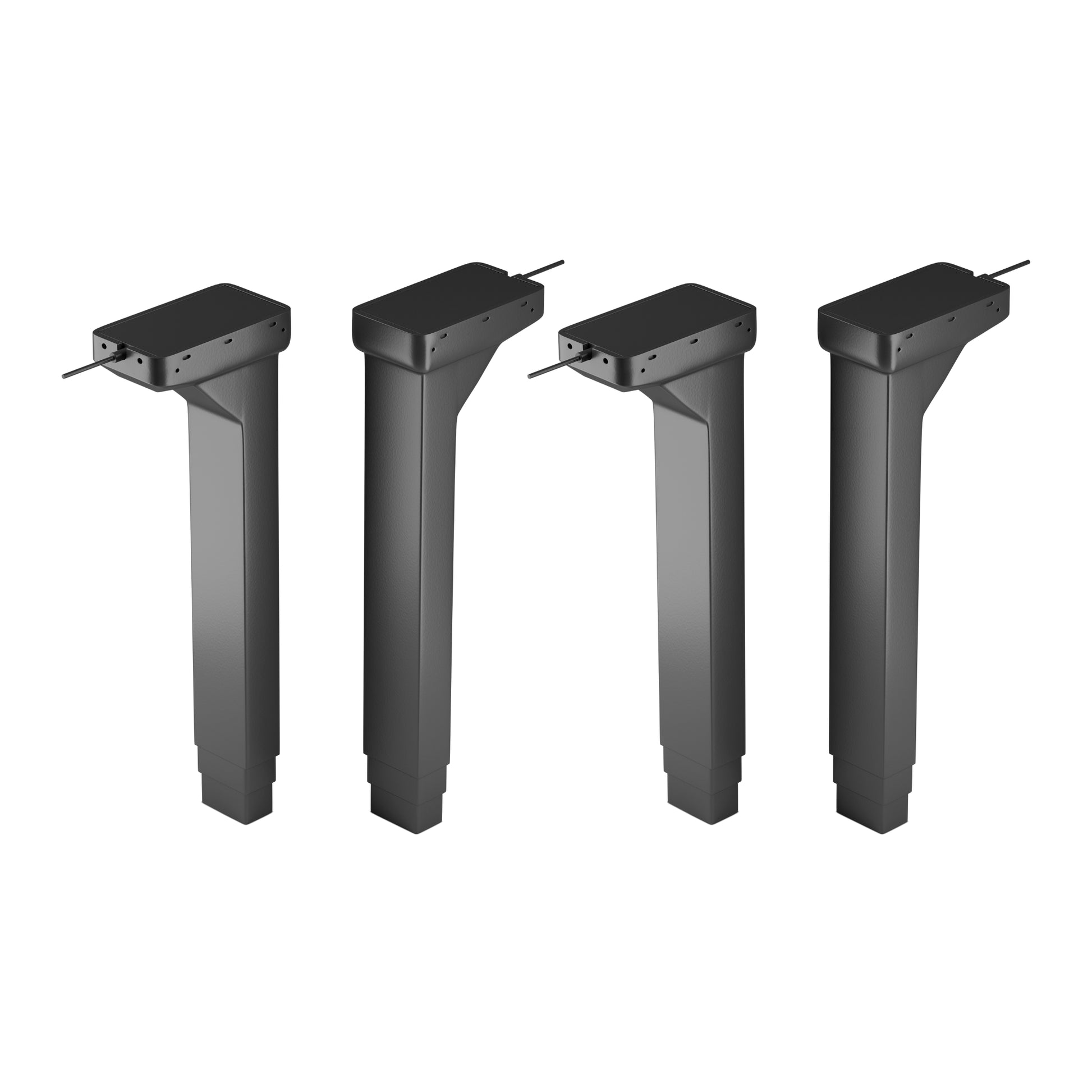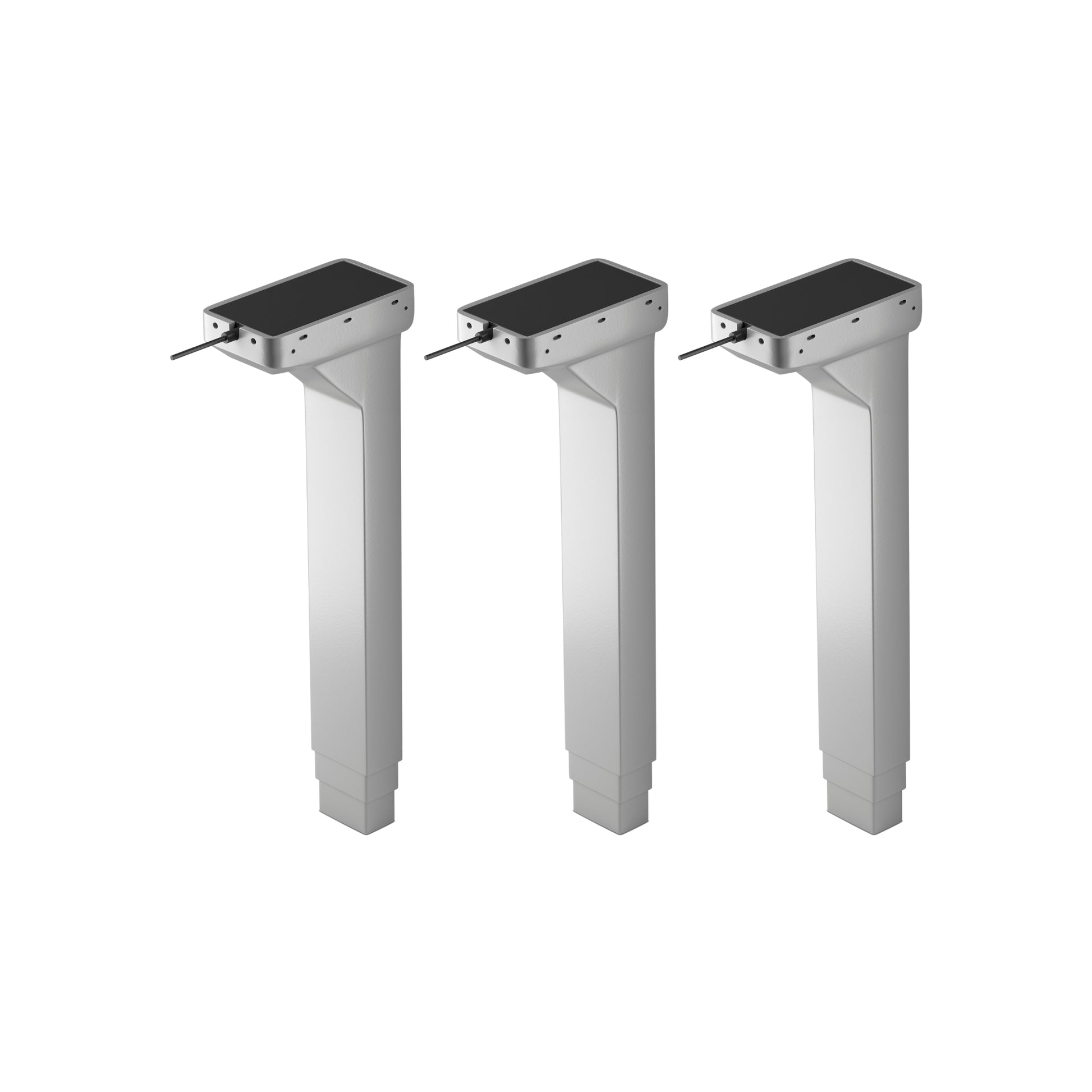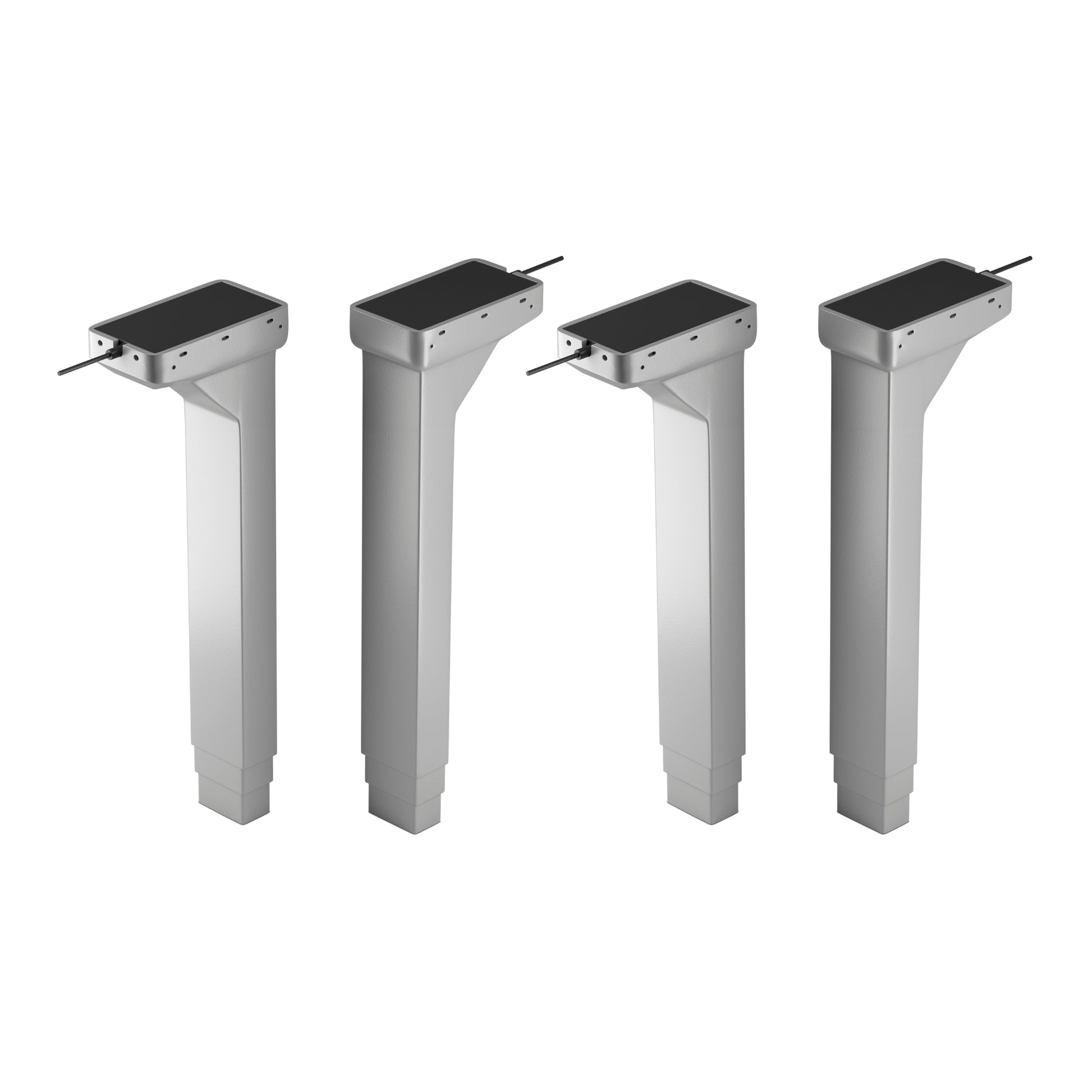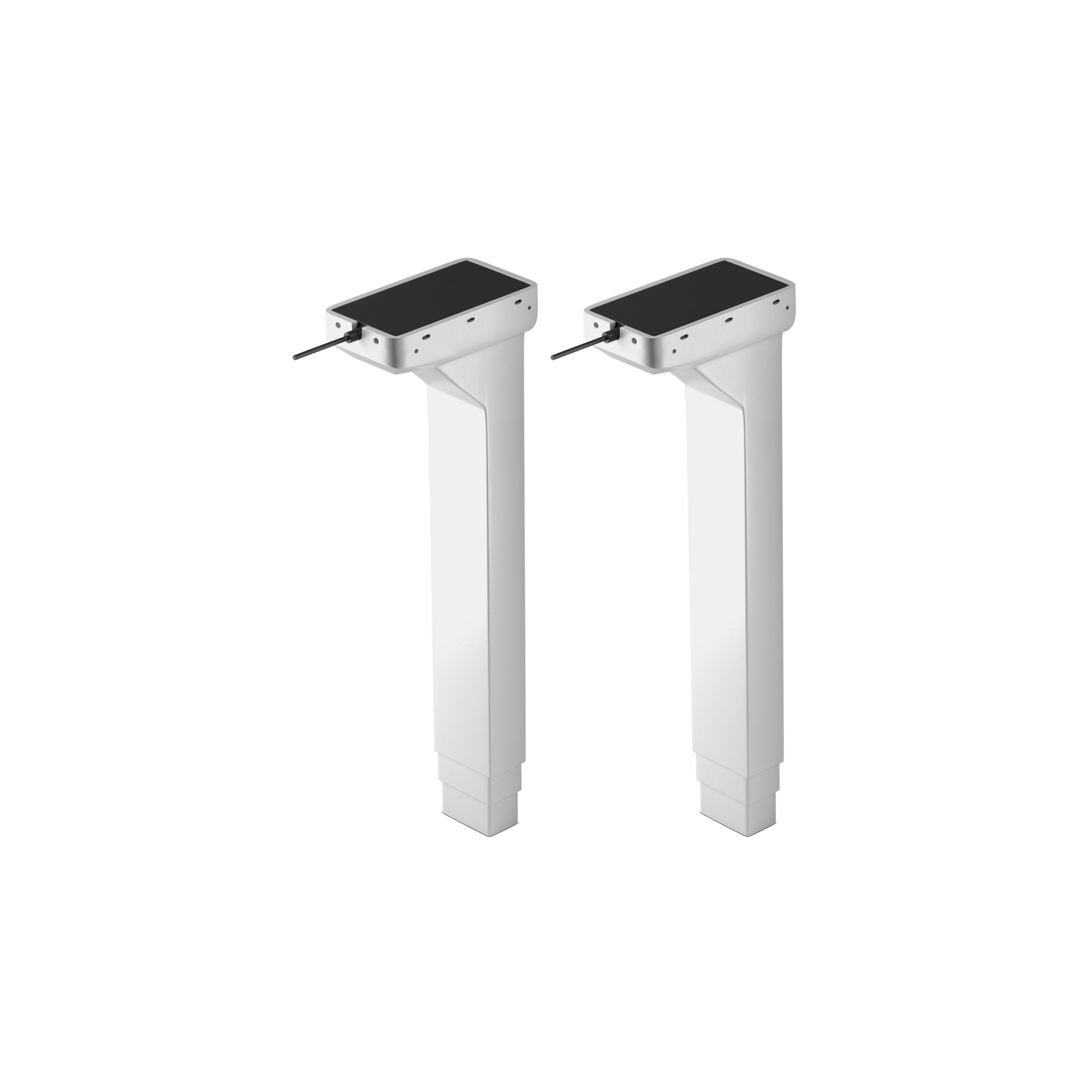
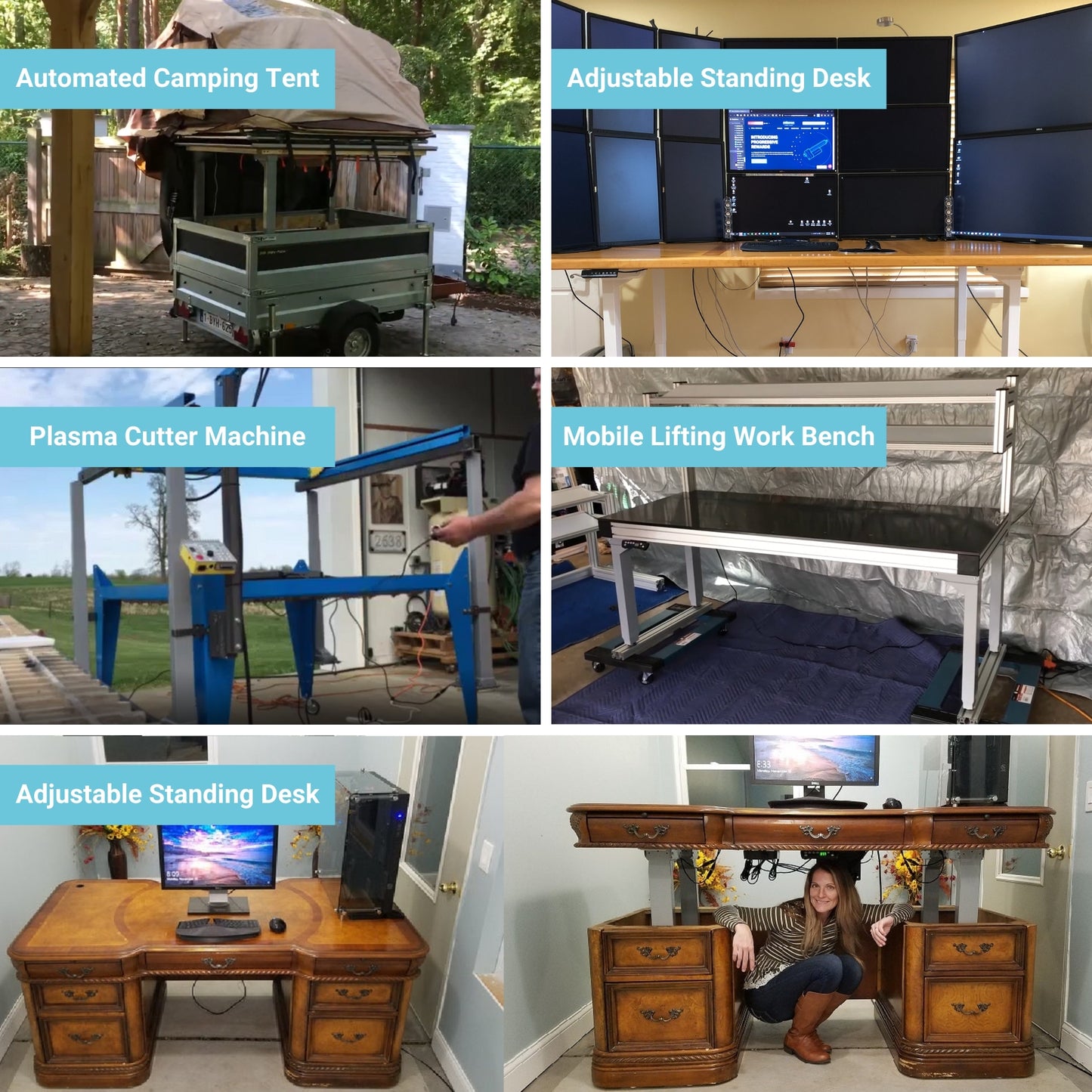


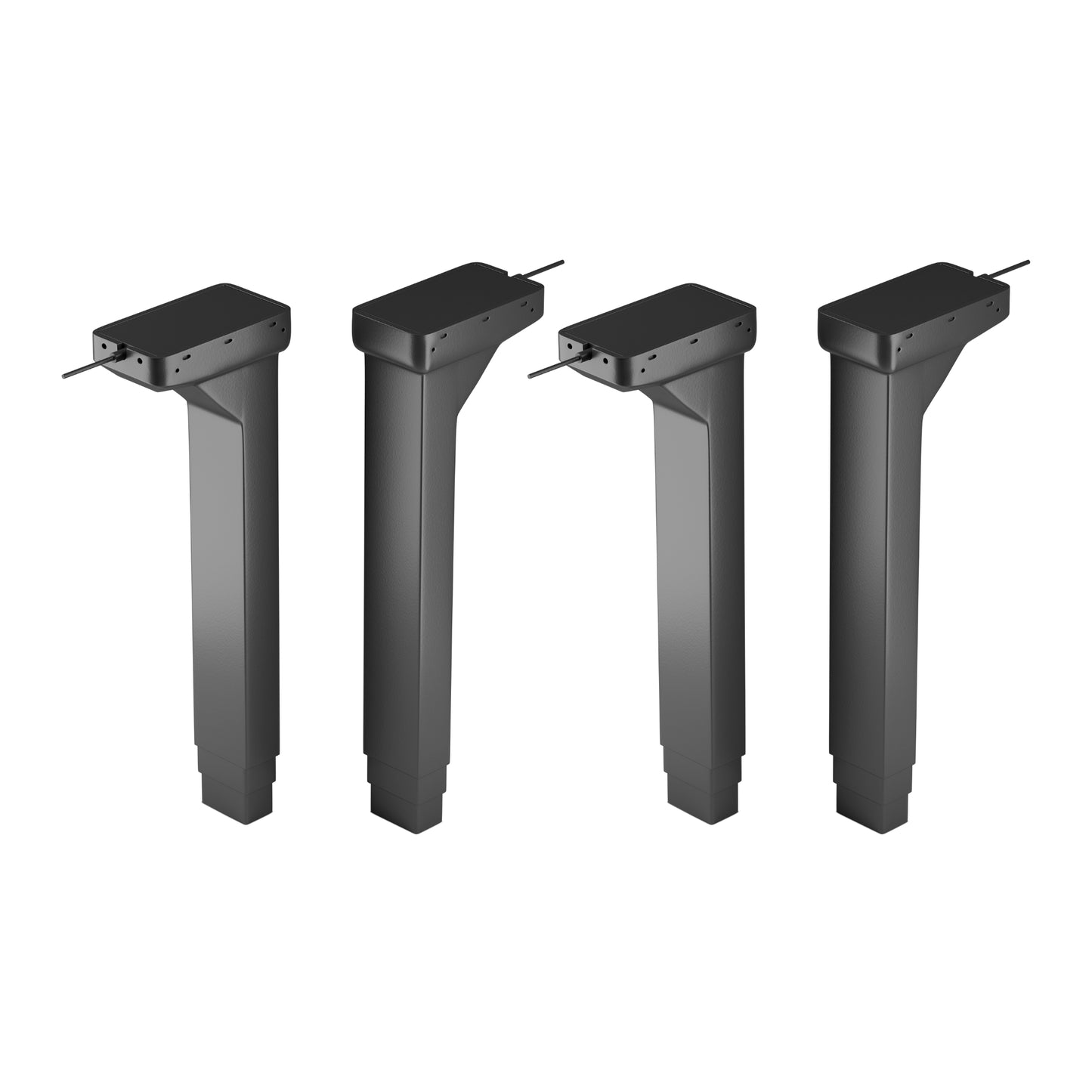





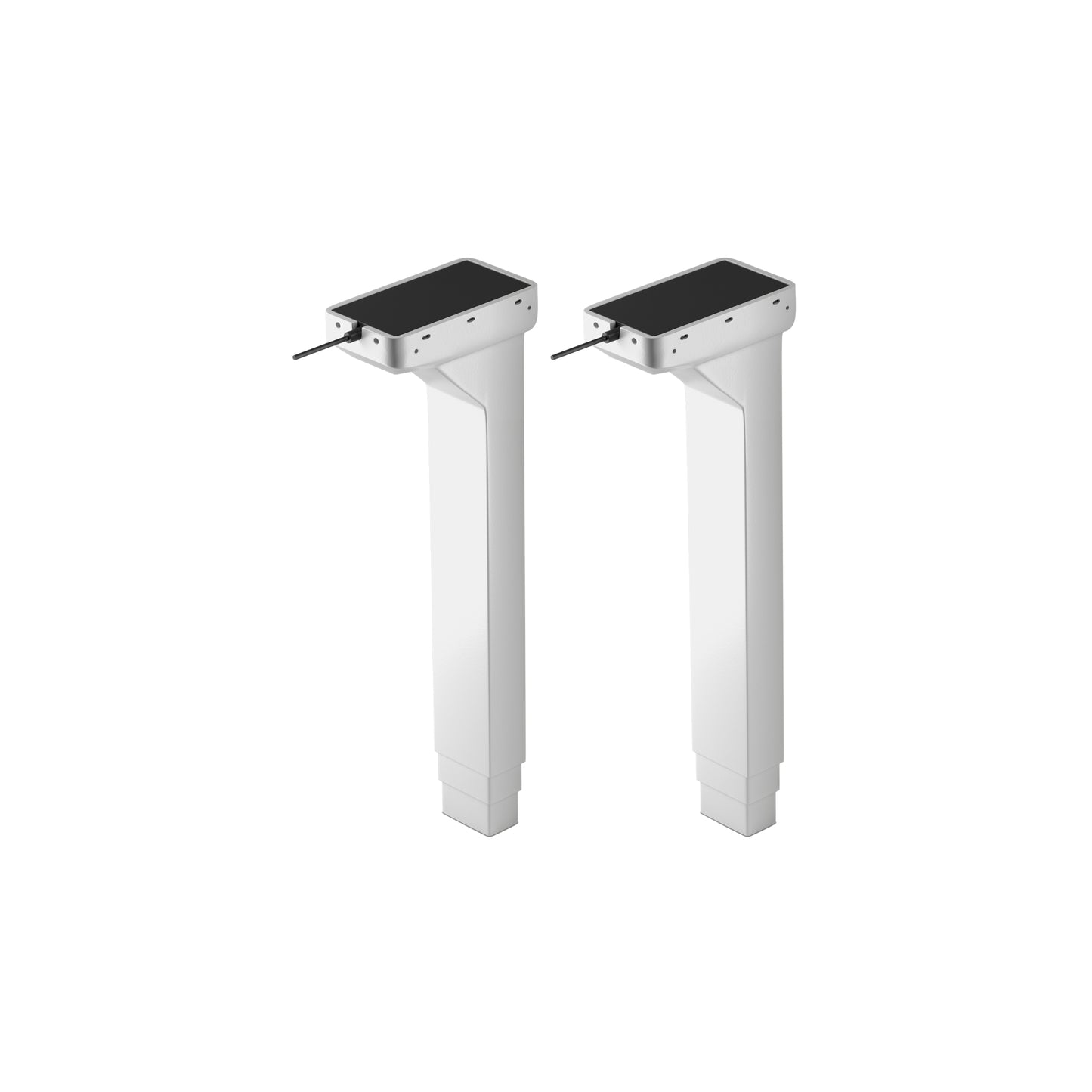


Column set quantity
Craft and personalize your lifting column set by choosing up to 4 legs. Choose between a single-leg compact setup, a two-leg configuration like the standard type standing desk, a three-leg combination for high weight capacity and large surface area, or a four-leg system for maximum weight capacity and size to handle any workstation. Selecting the number of legs you want for a system will help determine which control boxes will be most suitable for synchronization and memory positions and you can finalize the setup by adding the remote of your choice.| Control box | Product image | Input Voltage | Number of legs |
|---|---|---|---|
| FLTCON-1 |  |
110 VAC | 1 |
| FLTCON-2 |  |
110 VAC | 2 |
| FLTCON-2-24VDC |  |
24VDC | 2 |
| FLTCON-3 |  |
110 VAC | 3 |
| FLTCON-4 |  |
110 VAC | 4 |
The LG-02-3RM-25-180-HS-24V are single unit modular lifting columns that can be paired with our remotes and FLTCON series of control boxes that can handle up to 4 legs in a single control system. This column is capable of producing up to 180 lbs of force, allowing for the flexibility to handle a variety of different setups. These customizable leg configurations can also be chosen in black, white, or gray color.
Select from our large range of remote options and enjoy all the unique features of our different programmable wired remotes that can be used together with wireless remotes for extra convenience. Designed with a rectangle column shape, this 3 stage model also has a height range from 23.5" to 49". Installation is a simple procedure with the help of our instructional PDF manual which you can find here. It includes important technical information like the reset procedure and how to operate it as well as a set-up diagram.
The LG-02-3RM-25-180-HS-24V are single unit modular lifting columns that can be paired with our remotes and FLTCON series of control boxes that can handle up to 4 legs in a single control system. This column is capable of producing up to 180 lbs of force, allowing for the flexibility to handle a variety of different setups. These customizable leg configurations can also be chosen in black, white, or gray color.
Select from our large range of remote options and enjoy all the unique features of our different programmable wired remotes that can be used together with wireless remotes for extra convenience. Designed with a rectangle column shape, this 3 stage model also has a height range from 23.5" to 49". Installation is a simple procedure with the help of our instructional PDF manual which you can find here. It includes important technical information like the reset procedure and how to operate it as well as a set-up diagram.
| Input Voltage | 24VDC |
| Travel Distance | 25.5" |
| Height Range | 23.5" to 49" |
| Lifting Capacity | 180lbs |
| Speed | 1.57"/s |
| No Load Speed | 1.57"/s |
| Stages | 3 |
| Shape | Rectangular |
| Number of Remote Options | Various (with Progressive Automations Control Box) |
| Frame Material | Steel |
| Finish | Powder Coat - White, Black, Gray |
| Duty Cycle | 10% (2 minutes on, 18 minutes off) |
| Noise Level | < 50 dB |
| Protection Level | IP51 |
| Unit Weight | 18.74 lb |
| Energy Saving Mode | More Info |
| Programmable Memory Presets | More Info |
| Charging Port | More Info |
Following a set of standards is crucial for businesses to ensure their products and services can meet a level of quality that promotes customer satisfaction. At Progressive Automations, we aim for nothing but the best for our customers and strive toward continual improvements. Because of this, we are excited to announce that Progressive Automations is now ISO 9001:2015 certified!
Quality Assured
